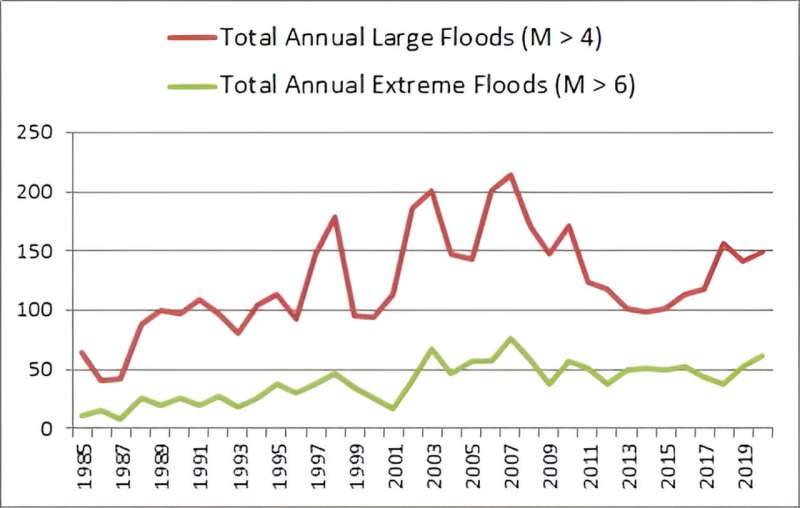Extreme floods, like those caused by Hurricane Helene, are becoming more frequent, posing a growing threat to communities across the United States. In this blog post, we explore the underlying causes behind this alarming trend, from climate change to urban infrastructure challenges. We also discuss the vital role of flood observation and tracking tools in helping humanity better respond to these natural disasters. Hurricane Helene and climate change are the key focus areas.

The Alarming Rise of Extreme Floods
Late last month, Hurricane Helene drenched the Southwest United States, leading to devastating floods that hit communities on the Gulf Coast and southern Appalachia. The storm killed more than 200 people and destroyed billions of dollars of property.
According to Albert Kettner, the associate director of INSTAAR and the director of the DFO Flood Observatory, extreme floods like the ones that hit Appalachia last month have become more common in the 21st century. It’s not that the world is getting wetter overall; in fact, many places are becoming more arid. Rather, the real problem is that really big floods, which were previously rare, are now happening more often.
Unraveling the Causes of Catastrophic Floods
Kettner explains that the reasons behind the increasing frequency of extreme floods are complex and multifaceted. In some cases, it could be that warmer air temperatures allow the atmosphere to hold more moisture, leading to heavier downpours. In other cases, extreme flooding might be driven by urban infrastructure that lacks adequate drainage, unable to handle the sheer volume of water.
Most of the underlying causes of catastrophic floods, however, boil down to two main categories: climate change and human changes to the landscape. “Flooding is both a derivative of precipitation and the area where that precipitation is landing,” Kettner said. As the climate continues to shift, so too will patterns of extreme weather, and communities will need to adapt accordingly.
The Role of Flood Observation in Disaster Response
Amidst the uncertainty surrounding the future of extreme weather, tools like the DFO Flood Observatory can play a crucial role in helping humanity better respond to natural disasters. Kettner has leveraged his expertise in flood tracking to create inundation maps for the United Nations World Food Program in the past, and he hopes to foster more collaboration between aid organizations and the observatory in the future.
By providing data-driven insights and visualizations, the DFO Flood Observatory can assist emergency responders, disaster relief agencies, and policymakers in making more informed decisions and allocating resources more effectively. As the threat of extreme floods continues to grow, the importance of such tools in mitigating the impact of these disasters cannot be overstated.
